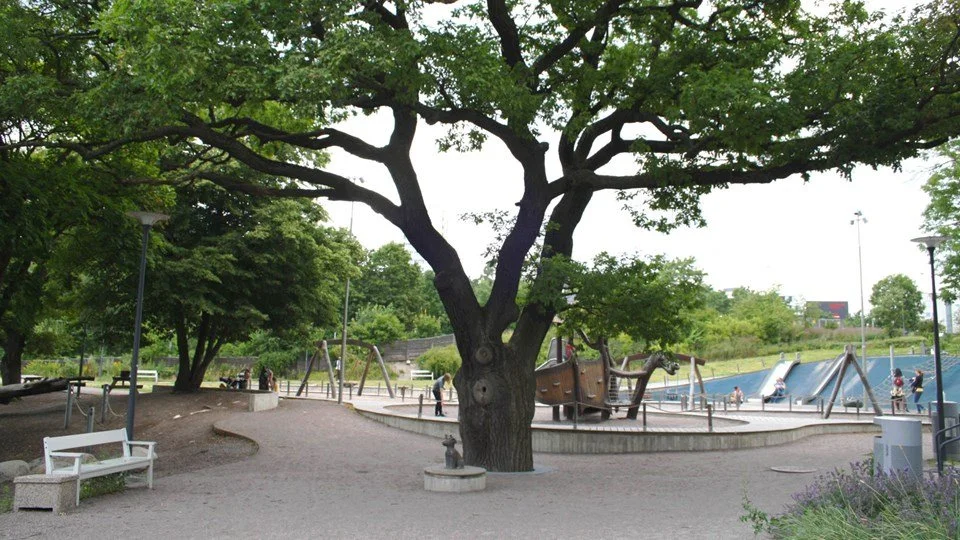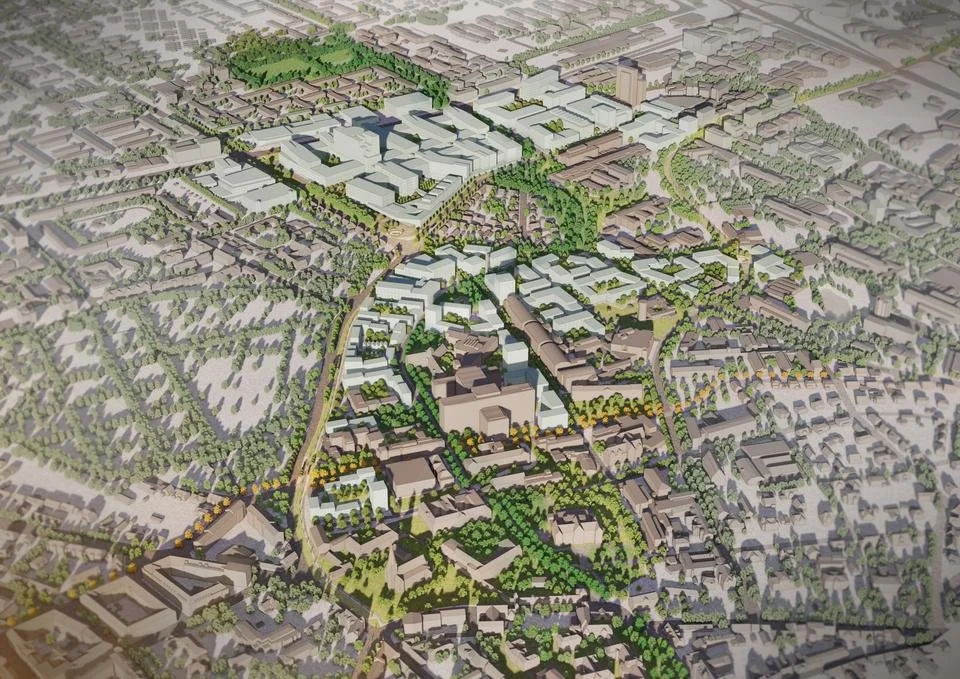Mohammad Sarraf is a postdoctoral Researcher at Institute for Housing and Urban Research (IBF), Uppsala University
Following the recent increase in the number of arrivals to Europe, there have been growing concerns over the question of living together in multicultural cities despite all our cultural differences. In this respect, there has been a tendency both in academia and practice to identify the so-called ‘segregated’ ethnic neighbourhoods as the ‘problematic’ urban areas, and implicitly or explicitly associate them with a variety of urban challenges and risks such as segregation, ethnic unrest, racially motivated hate crimes, fundamentalism, etc.
Apart from its occasionally exclusionary and implicitly xenophobic approach, such rhetoric may cause harm particularly to the ethnic residents of those neighbourhoods. The people who seek their citizenship identity and civic engagement not as coherent and absolute entities, but as an intersectional and relational fashion to other identities and social categories; the people who, seeking an empowered citizenry that accommodates their cultural differences, are eager to emphasise their civic engagement not only in their local ethnic community but also in the urban context.
Basing on the political ideas of multiculturalism (1,2), this short article seeks to shift the focus of urban planning discussions on ethnic neighbourhoods from ‘the problematic’ urban spaces to the areas with great potential for differential expression and fostering social sustainability of multicultural cities. Through the following four aspects, the article adopts a spatial approach to the question of planning for cultural diversity, and tries to explain how a shift in spatial understating of multiculturalism may help address the question of living together despite our differences in multicultural cities:
I) From nodal interventions to structural considerations
In urban planning debates and practices, there is a growing tendency to associate the social problem of segregation with ethnic neighbourhoods, and as a result, try to address it through nodal physical interventions in the diagnosed neighbourhoods; for instance, by implementing interventions such as refurbishment of housing units, improving the quality of public spaces, creating ‘meeting places’ for social interactions, etc.
However, this gives rise to an important question that to what extent the social problem of segregation may relate to the physical aspects of one particular neighbourhood? In other words, if we agree that segregation is a social problem deeply rooted in interwoven layers of social, political, racial and economic inequalities, then how possibly can urban planning associate it to one specific neighbourhood in the first place, and thereupon, aim to address it simply through some nodal interventions in that area?
By recognizing segregation as a complex multifaceted challenge rather than a neighbourhood problem, we will be able to explain, first, why segregation cannot be associated merely to ethnic neighbourhoods, and second, why a consistent approach to urban segregation needs to encompass spatial relations across the scale of the entire city rather than a mere focus on a particular urban district or neighbourhood.
II) From an archipelago of fragmented suburbs to an overlapping urban structure
In political theory, a multicultural society is described as a ”community of individuals and communities”(3). That is, although it lays stress on the fluidity and overlapping nature of communities in the society, it also emphasises the right of individuals and groups to be culturally different and to express and practice their cultural values and norms in accordance with democratic ideals. Respectively, the spatial dimensions of multiculturalism seek an ideal common polity of living ”together-in-difference” which enables people to live together in multicultural cities while maintaining their cultural affinities (4).
But how can urban form play a role in the situation of living ‘together-in-difference’ in multicultural cities? The answer to this question lies in the way the spatial structure of the city can separate daily movement of different groups in urban space, and consequently, could be misused as a tool to marginalize the minority groups as ‘invisible’ while simultaneously stigmatizing them as the ‘Other’ in urban life (5,6). To put it simpler, urban structure can push some groups of people out of sight of society – for instance by placing their residential areas and cultural public spaces far way and divided from the rest of the city – and in this way, provide a ground for making them ‘invisible’ in everyday urban life and stigmatizing certain cultural practices and norms.
As a contrast to an archipelago of fragmented and isolated suburbs, the ethnic neighbourhoods of a multicultural city need to be spatially integrated into a constantly overlapping urban form. That, on the one hand, provides different cultural communities with local public spaces where they can express and practice their values and norms. On the other hand, it brings the differences of cultural groups in sight of all the city and represents them as a part of everyday and conventional urban life (7).
The network of urban space in the Stockholm area, copyright Lantmäteriet
III) From ‘meeting-places’ to a multicultural urban form
One of the currently dominant approaches of urban planning to segregation is to invest in and create the so-called ‘meeting-places’ in different neighborhood districts. The assumption here is that people of different backgrounds gather in such public spaces, meet each other, establish meaningful encounters, and consequently build social ties based on their co-existence in shared public spaces. The theoretical core of such approaches is rooted in the ‘interculturalism’ idea, which seeks establishing an understanding of difference through interpersonal encounters in public spaces (5, 8, 9).
However, although the idea of ‘meeting-places’ could play a compelling role, a few critical questions remain unanswered: to what extent is this underlying assumption defensible that people establish ties and gain a deep understanding of their cultural differences through random encounters in public spaces? Furthermore, to what extent a social encounter between strangers is under the influence of spatial characters of public space? To put it simpler, how often our random encounters with total strangers in public spaces lead to establishing meaningful social ties that now urban planning has placed the ‘meeting-places’ strategy and efforts to encourage interpersonal ties at the centre of its approach to the question of living together in multicultural cities?
Given the complexity of urban sociality and its relation to a variety of non-spatial determinants – which cannot be narrowed down merely to interpersonal encounters in public spaces – there have been search for alternative spatial approaches to the question of living together. The particular emphasis of these approaches has been laid on shaping urban habits of co-existing and sharing public spaces, rather than establishing intercultural bridges between strangers in public spaces (10, 11). Acknowledging the cultural differences of individuals and groups in urban spaces, the main core of such approaches is to encourage a civility and dignity towards the difference (10). Accordingly, urban planning can focus its efforts on creating a multicultural urban structure where living ‘together-in-difference’ is a routine part of daily urban life, rather than limiting its scope to the interpersonal encounters in ‘meeting-places’.
IV) From neutral public spaces to politically, socially and culturally constituted urban spaces
Urban development programs occasionally overlook the complexity of living with difference in multicultural cities by narrowing it down to assumptions that public spaces serve as ‘neutral’ grounds for different groups of society, and therefore, due to their intrinsically neutral character they necessary always accommodate different political and cultural views, practices and participations in an equal and non-discriminatory manner.
However, the perception of public space as a neutral meeting place has been challenged on theoretical grounds . There are in fact well established arguments that no structured public space can be culturally neutral, nor can it be free of values and perspectives. But rather are constituted by – and biased towards – a variety of cultural and political constitutions (13). Accordingly, the aim to create a neutral ground for cultural expression in urban space may therefore be naïve since public spaces are likely to be dominated by the cultural principles and interpretations of the dominant groups and may not provide minorities or marginalized groups with an equal opportunity for public expression and participation.
By acknowledging that urban planning and design practices could be spatial tools to implement the politics of multiculturalism, urban planners and architects should take the non-neutrality of public spaces into account, and throughout the entire planning and decision-making processes make reflections on the unintentional advantages or disadvantages that their planning programs give to particular groups over others.
Closing words
Despite being a political complex, multiculturalism encompasses spatial dimensions that need to be addressed through physical interventions and urban development programs. Accordingly, urban form of the city – as a complex spatial network and by way of its influence on variety of social, cultural, political and economic constitutions – generates spatial conditions for an approach to the politics of living together. Seeking a shift in urban planning’s understanding of ethnic neighborhoods, this article emphasizes on an overlapping urban form as a spatial requisite for fostering the urban habits of living ‘together-in-difference’ and sustaining the ideals of a democratic multicultural society.
Mohammad Sarraf
Referenser
Parekh, B.C., Rethinking multiculturalism : cultural diversity and political theory. 2nd ed. 2006, Basingstoke England ; New York: Palgrave Macmillan.
Kymlicka, W., Contemporary political philosophy : an introduction. 2nd ed. 2002, Oxford; New York: Oxford University Press.
Parekh, B.C., The future of multi-ethnic Britain : report of the Commission on the Future of Multi-Ethnic Britain. 2000, London: Profile Books.
Young, I.M., Residential segregation and differentiated citizenship. Citizenship Studies, 1999. 3(2): p. 237 – 252.
Sandercock, L. and V. Cavers, The Story of the Collingwood Neighbourhood. House: A Unique Gathering Place, in Where Strangers Become Neighbours: Integrating Immigrants in Vancouver, Canada. 2009, Springer Science+Business Media B.V. p. 123 - 158.
Young, I.M., Justice and the Politics of Difference. 1990: Princeton University Press.
Sarraf, M., Spatiality of Multiculturalism. 2015, KTH Royal Institute of Technology: Stockholm.
Sandercock, L., When Strangers Become Neighbours: Managing Cities of Difference. Planning Theory & Practice, 2000. 1(1): p. 13 – 30.
Wood, P. and C. Landry, The intercultural city : planning for diversity advantage. 2008.'
Amin, A., Land of strangers. 2012, Cambridge: Polity.
Valentine, G., Living with difference: reflections on geographies of encounter. Progress in Human Geography, 2008. 32(3): p. 323 – 337.
Hajer, M.A. and A. Reijndorp, In search of new public domain : analysis and strategy. 2001, Rotterdam: NAi Publishers.
Modood, T., Multiculturalism : a civic idea. Second edition. ed. 2013, Cambridge, UK ; Malden, MA: Polity.










